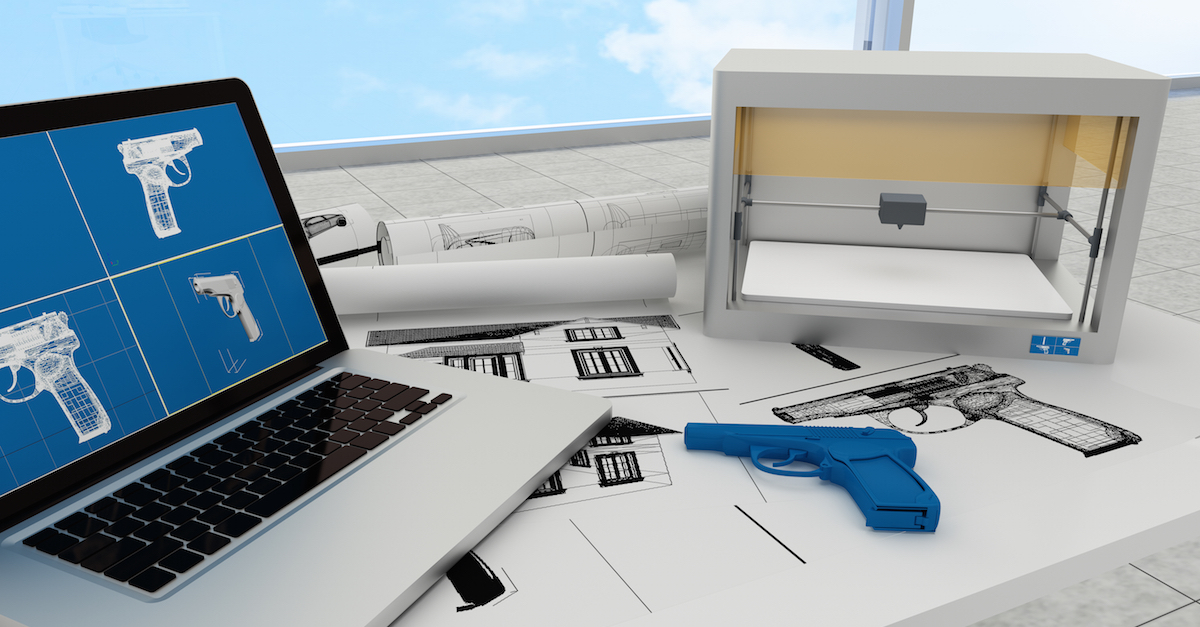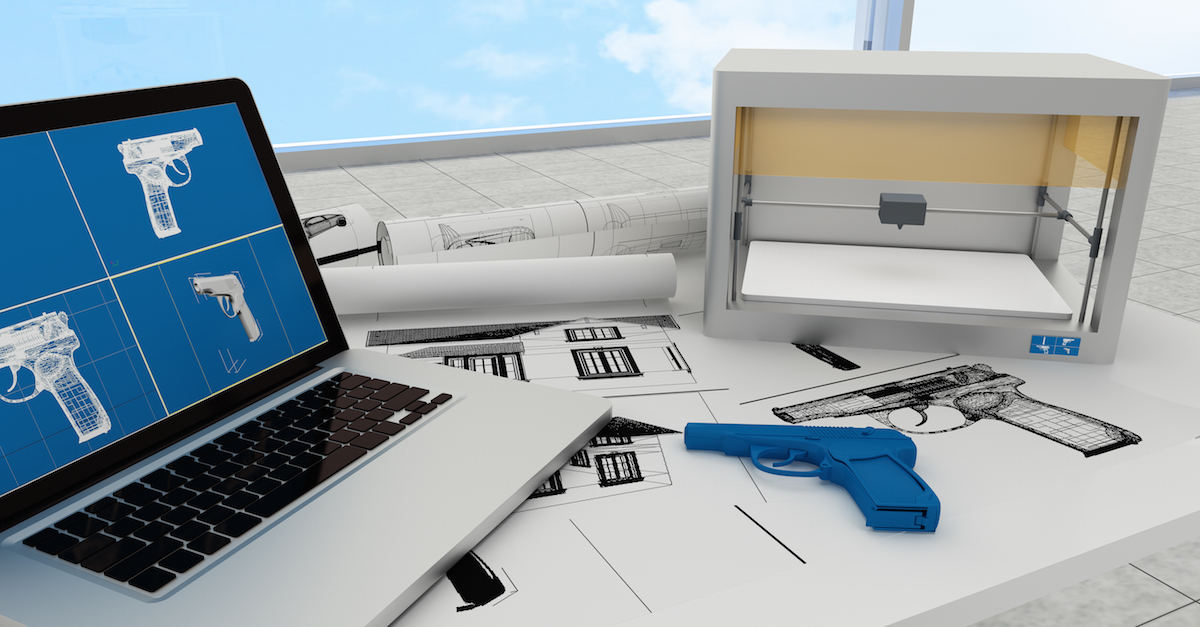 Is a gun something that should be protected by the US Constitution’s First Amendment rights to free speech?
Is a gun something that should be protected by the US Constitution’s First Amendment rights to free speech?
How about plans to make a plastic gun with a 3D printer?
Is that something that people can freely “say” online?
The US State Department has recently answered those questions with a decisive “No,” having issued two statements regarding its intention to regulate Americans’ publishing of online data that could enable someone to digitally fabricate a gun.
According to a proposed rule published on 3 June, restricting people from publishing such plans entails treating the blueprints as a controlled “foreign export” of munitions.
Wired reports that the State department last week sent a letter to the gun access group Defense Distributed in which it confirmed that the group will be required to get specific permission from the government before publishing its 3D printable gun files online – a warning that comes after it told the company in 2013 to take the gun files offline pending a decision about their legality.
At the time, the government told Defense Distributed that it wanted to review the files for compliance with arms export control laws known as the International Traffic in Arms Regulations (ITAR).
Its rationale was that allowing such files to be downloaded abroad was in violation of those export controls.
The proposed rule would redefine ITAR regulations of gun exports to include a provision on “technical data” posted to the internet: a term it defined as data…
...in any tangible or intangible form, such as written or oral communications, blueprints, drawings, photographs, plans, diagrams, models, formulae, tables, engineering designs and specifications, computer-aided design files, manuals or documentation, electronic media or information gleaned through visual inspection...
The gun makers are fighting back.
Cody Wilson, founder of Defense Distributed and creator of its Liberator printed gun, has called the State Department’s actions unconstitutional.
Here’s how he put it in an interview with Fox News:
They cynically redefine any posting of any technical data to be an 'export', and thereby claim that it isn't speech. It's surreal and they're getting away with it.
In fact, the State Department’s proposed ban on publishing printable gun schematics online comes just a month after Defense Distributed filed a lawsuit against the federal government for forcing it to remove blueprints of the Liberator from its site.
Wilson described the move as a violation of First Amendment Rights and believes that the new mandate is a direct response to his lawsuit.
He’s reportedly said in the past that the Liberator project was intended to highlight how technology can render laws and governments basically irrelevant.
Defense Distributed – a non-profit group that Wilson founded – isn’t the only entity putting up resistance to the State Department’s clampdown on 3D printed guns.
In protest over what he calls “the obvious futility of attempting to regulate speech and ban simple mechanical objects,” maker Peter Alaric DeSimone has built a 3D printable (and potentially poisonous – though he’s not sure if that would be legal, he notes; in case you’re wondering, it is) dart pistol.
In a video on his site, DeSimone points out that his pistol is completely legal, since neither the US munitions lists nor ITAR cover air guns.
He designed the 40mm blowgun using a piston system that incorporates rubber bands to bring the piston down and reset the trigger.
The main frame of the gun took about 8 hours to print, while the entire weapon took about 12 hours.
If you take a look at DeSimone’s video, you’ll see that the dart gun fires with appreciable accuracy and force.
True, the (potentially poisonous) dart gun may not be as lethal as a 3D printed gun.
But hell, that’s not saying much: a 3D printed gun can be lethal not only when you’re looking down the business end of a barrel, but also when it’s just sitting around and decides to explode before it even fires.
The blow gun may not be that dangerous, but it’s dangerous enough. Just ask that once-smiling red balloon in DeSimone’s video.
Should the blueprints for these weapons really be considered “free speech?” Or is that a convenient bending of reality?
Are gun schematics really what the First Amendment was meant to cover?
And at the end of the day, does this controversy even matter, given that once you’ve published something online, you just can’t stuff the genie back into the bottle?
Even if Defense Distributed gets shut down, there are other sites that will be all too happy to distribute the blueprints, as well as sites on the Deep Web.
The State Department’s rules likely will only make it a bit more arduous to find gun schematics. But that doesn’t make it a worthless endeavor, by any means.
Many Americans want stricter laws on gun control.
As of the most recent Gallup poll in October 2014, 47% of Americans wanted more strict gun laws, 38% were happy with current laws, and a small minority – 14% – wanted less strict gun laws.
Readers, what are your thoughts on the matter? Does the State Department’s proposed rule violate free speech? Threaten our rights to bear arms?
Does it make sense for the State Department to at least try to limit the spread of munitions schematics?
Please let us know what you think in the comments section below.
Image of 3d printed gun courtesy of Shutterstock.

Grant
These blueprints should be protected free speech, in the same way that The Anarchists Cookbook is. ITAR and the BATFE are there to regulate actual *physical* objects, such as arms and arms components.
It’s also a little misleading to discuss the Liberator failure during a test fire. The Liberator went through dozens of design changes as Defense Distributed was creating it. It was made specifically to test whether or not such a firearm could be manufactured using 3D printing, how thick the material had to be to withstand the pressures, what sorts of resins were needed, etc. The whole idea was for it to fail over and over again, until a version was made that worked (even then, it requires specific types of 3D printer material to function).
U.S. law already allows the creation of firearms at home using other methods, such as buying an 80% lower and building it yourself, milling the entire firearm yourself on six-axis mills and lathes, or even making an AK out of a shovel (yes, it’s been done and it’s 100% legal). 3D printing of a working firearm is no different.
Let us also not forget that it does not matter whether people want stricter laws or not (and in this case, it’s less than half of the population). Much like the recent decision to uphold same sex marriage, rights are rights. It doesn’t matter how many people think you shouldn’t have them, they are protected by the Constitution and should not be infringed.
Paul Ducklin
When someone invents a 3D lathe we’re in trouble!
Andy
You can already make a working firearm out of $9 in parts from the plumbing supply store. Another $20 in parts in you can make a semi-auto .22. Regulation and laws only work if people are willing to follow and comply.
You don’t need a 3D lathe to mill a lower receiver. A cheap drill press from Harbor Freight and a little bit of 3D thinking and you’ll have a lower milled out in a few hours.
madmann135
There are times when I am ashamed of the US gov, this is one of them.
The schematics of the printable gun are not only protected by the first amendment but the second amendment.
The printable gun can easily be considered art because it is the first freeware 3D printed gun, it works but it does not work well. The second amendment does not say what kind of arms but it does say that Americans have a right to “keep and bear arms” (to own and carry weapons).
They are upset because someone had the “audacity” to think outside the box.
Jim VanBeek
“Is a gun something that should be protected by the US Constitution’s First Amendment rights to free speech?” I thought that guns were actually protected by the second amendment! Many people seem to forget that though.
“A well regulated Militia, being necessary to the security of a free State, the right of the people to keep and bear Arms, shall not be infringed.”
Andy Loates
note: ‘A well regulated militia . . .’ this would seem to exclude most Americans from owning a firearm. Unless they were to join their states National Guard. Or am I missing something here, Messrs Charlton and Nugent?
Sean
You are missing quite a lot. The first part of the sentence “A well regulated militia, being necessary to the security of a free state” Means that states can have a state guard. The rest of the sentence “the right of the people to keep and bear arms, shall not be infringed.” Is what gives everyone the right to carry and own a gun.
ANONymousPatriot
It is just a further trampling of our God Given RIGHTS to create and advance ourselves. It is just the Government saying that we don’t have the right to do anything without their explicit permission and/or approval. That is what this is.
Jim Miller
Time for the US to regulate lathes.
For too long now, authorities have turned a blind ear to the
dangers of allowing the milling community free rein.
herzco
“He’s reportedly said in the past that the Liberator project was intended to highlight how technology can render laws and governments basically irrelevant.” If I ever have the funds I am leaving this insane asylum for a country that values human life and with real, meaningful gun control. (You know, those countries where there are almost no gun deaths? Yeah, those)
Anonymous
bye
Wilbur
If you support this control effort then you also have to support the US government’s previous efforts to use the same “export of munitions” argument to stop Phil Zimmerman’s spread of PGP. They tried to ban publishing the source code for PGP as a “munition” because it could be compiled into an export-controlled computer encryption program that had been classified as a “munition”. Although Zimmerman’s case was eventually dropped, he paid a huge price enduring years of government threats.
I fail to see any real difference between publishing computer source code for an export-controlled computer program and the analogous source code for an export-controlled mechanical object.